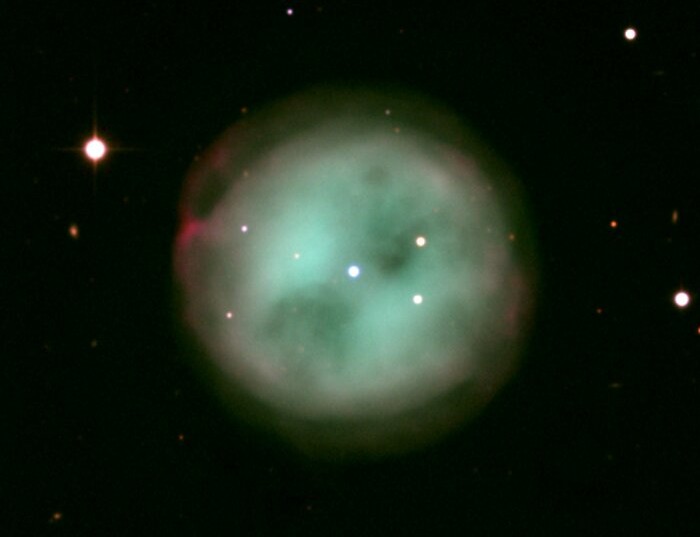The Owl Nebula, also known as Messier 97 (M97), is a fascinating planetary nebula located in the constellation Ursa Major. It was discovered by the French astronomer Pierre Méchain in 1781, and subsequently cataloged by Charles Messier in his list of non-cometary objects.
Appearence and Composition
M97 is a planetary nebula formed when a dying star sheds its outer layers, creating a glowing shell of gas and dust. It earned its name due to its resemblance to an owl’s face when viewed through telescopes, with two distinct dark patches resembling eyes. The nebula has a round shape, featuring a brighter central region surrounded by fainter outer layers. Its colors are predominantly bluish-green, which result from the emission of ionized oxygen and hydrogen gases.
At the heart of M97 lies the progenitor star, now a white dwarf, which is the dense remnant of the original star’s core. The striking bluish-green glow of the nebula comes from the ionization and excitation of gases, powered by intense ultraviolet radiation from the central star. This celestial object offers a glimpse into the final stages of stellar evolution, as the core continues to emit energy while the outer layers drift into space.
Size, Distance and Age
The Owl Nebula is located approximately 2,030 light-years away from Earth. It spans a diameter of about 1.4 light-years, making it relatively compact compared to other planetary nebulae. It is estimated to be around 6000 years old.
Observation
M97 is a popular target among amateur astronomers because of its brightness and unique appearance. Under dark skies, it appears as a faint, fuzzy patch through small telescopes or large-aperture binoculars (70-80mm). Observers using larger telescopes can discern finer details and structures within the nebula.
The nebula is best observed during the spring months in the Northern Hemisphere, particularly from March to May, when Ursa Major is well-placed in the evening sky. In March and April, Ursa Major rises higher in the sky during the evening hours, providing better viewing opportunities.




